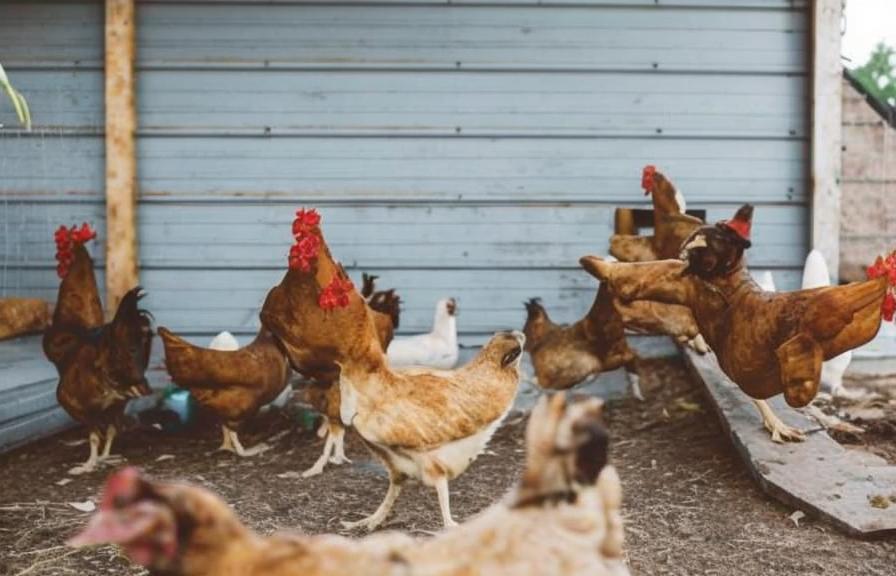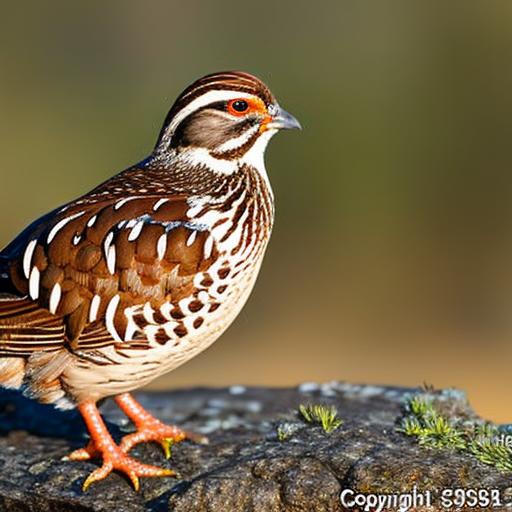Keeping Bobwhite quail and chickens together can be a rewarding experience for poultry enthusiasts. Both species have their own unique characteristics and benefits, and when kept together, they can create a diverse and dynamic flock. Bobwhite quail are known for their small size, gentle nature, and distinctive calls, while chickens are valued for their egg production, pest control, and colorful plumage. By combining these two species, poultry keepers can enjoy the benefits of both, while also creating a more interesting and varied flock.
When considering keeping Bobwhite quail and chickens together, it’s important to understand the compatibility between the two species, as well as their housing, feeding, health, and behavioral needs. By taking these factors into consideration, poultry keepers can create a harmonious and thriving mixed flock that provides both entertainment and practical benefits.
Key Takeaways
- Bobwhite quail and chickens can be kept together in the same space, but it’s important to understand their compatibility and specific needs.
- Understanding the social dynamics and behavior of both species is crucial for successful cohabitation.
- Providing separate housing areas within the same enclosure is essential to prevent aggression and ensure the safety of both species.
- A balanced diet that meets the specific nutritional needs of both Bobwhite quail and chickens is important for their health and well-being.
- Regular monitoring for signs of disease and prompt veterinary care are essential for maintaining the health of mixed flocks.
Understanding the compatibility between Bobwhite quail and chickens
Bobwhite quail and chickens are generally compatible when kept together, as long as certain considerations are taken into account. Both species are ground-dwelling birds that forage for insects and seeds, so they have similar dietary and environmental needs. However, it’s important to note that Bobwhite quail are smaller and more delicate than chickens, so special care should be taken to ensure that they are not bullied or injured by the larger birds.
In general, Bobwhite quail and chickens can coexist peacefully as long as they have enough space to roam and access to separate feeding and watering areas. It’s also important to monitor the flock for any signs of aggression or bullying, as chickens may sometimes peck at the smaller quail out of curiosity or territorial behavior. By providing plenty of space, hiding spots, and separate resources, poultry keepers can help ensure that their mixed flock of Bobwhite quail and chickens can live together harmoniously.
Housing requirements for Bobwhite quail and chickens
When keeping Bobwhite quail and chickens together, it’s important to provide suitable housing that meets the needs of both species. Bobwhite quail are ground-dwelling birds that prefer to roost on the ground or in low shrubs, while chickens are more inclined to roost in elevated areas such as perches or nesting boxes. Therefore, the housing should be designed to accommodate both preferences.
The housing should also provide adequate space for both species to move around freely without feeling crowded or stressed. Additionally, it’s important to provide separate nesting areas for the quail and chickens to lay their eggs, as well as separate feeding and watering stations to prevent competition and aggression. By providing a well-designed and spacious housing environment, poultry keepers can ensure that their mixed flock of Bobwhite quail and chickens has the space and resources they need to thrive.
Feeding and nutrition considerations for Bobwhite quail and chickens
Feeding and nutrition are important considerations when keeping Bobwhite quail and chickens together. Both species have similar dietary requirements, as they are omnivorous birds that forage for insects, seeds, and vegetation. However, it’s important to provide a balanced diet that meets the specific nutritional needs of each species.
For example, Bobwhite quail require a higher protein diet than chickens, especially during the breeding season. Therefore, it’s important to provide a game bird feed or a high-protein starter feed specifically formulated for quail. Chickens can also eat this feed, but they may not require as high of a protein content as the quail. Additionally, both species can benefit from supplemental treats such as mealworms, fruits, and vegetables to provide variety and enrichment in their diet.
It’s also important to provide separate feeding stations for the quail and chickens to prevent competition and ensure that each bird has access to the food they need. By providing a balanced diet that meets the specific nutritional needs of both species, poultry keepers can help ensure that their mixed flock of Bobwhite quail and chickens remains healthy and thriving.
Health and disease management for mixed flocks
When keeping Bobwhite quail and chickens together, it’s important to be vigilant about health and disease management to prevent the spread of illness between the two species. Both Bobwhite quail and chickens are susceptible to a range of common poultry diseases such as coccidiosis, Marek’s disease, and respiratory infections. Therefore, it’s important to practice good biosecurity measures and monitor the flock for any signs of illness.
It’s also important to provide regular veterinary care for both species, including vaccinations, parasite control, and routine health checks. Additionally, it’s important to quarantine any new birds before introducing them to the existing flock to prevent the spread of disease. By practicing good biosecurity measures and providing regular veterinary care, poultry keepers can help ensure that their mixed flock of Bobwhite quail and chickens remains healthy and disease-free.
Behavioral considerations when keeping Bobwhite quail and chickens together

Behavioral considerations are important when keeping Bobwhite quail and chickens together. Both species have their own unique social structures, communication methods, and territorial behaviors that should be taken into account when managing a mixed flock. For example, chickens may exhibit aggressive behavior towards the smaller quail out of curiosity or territoriality, so it’s important to monitor the flock for any signs of bullying or aggression.
It’s also important to provide plenty of hiding spots and separate areas for the quail to retreat to if they feel threatened by the larger chickens. Additionally, it’s important to observe the flock regularly to ensure that all birds are getting along peacefully and are not being bullied or excluded from resources such as food or water. By understanding the behavioral dynamics of both species and providing a well-designed environment with plenty of space and resources, poultry keepers can help ensure that their mixed flock of Bobwhite quail and chickens can live together harmoniously.
Conclusion and final considerations for keeping Bobwhite quail and chickens together
In conclusion, keeping Bobwhite quail and chickens together can be a rewarding experience for poultry enthusiasts. By understanding the compatibility between the two species, providing suitable housing, feeding a balanced diet, managing health and disease, and considering behavioral dynamics, poultry keepers can create a harmonious mixed flock that provides both entertainment and practical benefits.
It’s important to remember that each species has its own unique needs and characteristics that should be taken into account when managing a mixed flock. By providing a well-designed environment with plenty of space, resources, and enrichment opportunities, poultry keepers can help ensure that their mixed flock of Bobwhite quail and chickens remains healthy, happy, and thriving. With proper care and attention to detail, keeping Bobwhite quail and chickens together can be a fulfilling experience that allows poultry enthusiasts to enjoy the benefits of both species in one dynamic flock.
If you’re considering keeping bobwhite quail and chickens together, it’s important to provide them with a suitable coop that meets the needs of both species. The article “Farmhouse Chicken Coop” on PoultryWizard.com offers valuable insights into creating a coop that can accommodate multiple types of poultry. This resource provides practical tips and design ideas for a coop that can house both quail and chickens comfortably. Check out the article here for expert advice on creating a coop that meets the needs of your mixed flock.
FAQs
Can you keep bobwhite quail and chickens together?
Yes, it is possible to keep bobwhite quail and chickens together in the same coop or aviary.
What are the considerations for keeping bobwhite quail and chickens together?
When keeping bobwhite quail and chickens together, it is important to consider the space requirements, diet differences, and potential for aggression between the two species.
What is the recommended space requirement for keeping bobwhite quail and chickens together?
It is recommended to provide ample space for both bobwhite quail and chickens when keeping them together. This allows for the birds to have their own space and reduces the likelihood of aggression.
What are the diet differences between bobwhite quail and chickens?
Bobwhite quail and chickens have different dietary needs. It is important to provide separate feeders for each species to ensure they are getting the appropriate nutrition.
What are the potential risks of keeping bobwhite quail and chickens together?
One potential risk of keeping bobwhite quail and chickens together is the potential for aggression between the two species. It is important to monitor their behavior and separate them if necessary to prevent any harm.
Are there any benefits to keeping bobwhite quail and chickens together?
Keeping bobwhite quail and chickens together can provide benefits such as reduced loneliness for the birds, as they are social animals that thrive in the company of others. Additionally, they can help keep each other warm during colder months.
Meet Walter, the feathered-friend fanatic of Florida! Nestled in the sunshine state, Walter struts through life with his feathered companions, clucking his way to happiness. With a coop that’s fancier than a five-star hotel, he’s the Don Juan of the chicken world. When he’s not teaching his hens to do the cha-cha, you’ll find him in a heated debate with his prized rooster, Sir Clucks-a-Lot. Walter’s poultry passion is no yolk; he’s the sunny-side-up guy you never knew you needed in your flock of friends!







